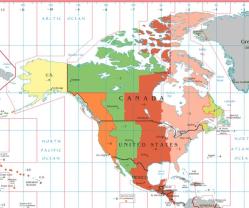Does UTC observe daylight saving time?
No, Coordinated Universal Time (UTC) itself does not observe daylight saving time (DST). UTC is a time standard that does not change with the seasons or geographic locations. It is not affected by adjustments like daylight saving time.
Daylight saving time is a practice observed in many countries where the local time is shifted forward by one hour during the warmer months to make better use of natural daylight. However, UTC remains constant throughout the year and is not subject to such adjustments.
It's essential to note that while UTC doesn't observe daylight saving time, some regions and countries do adjust their local time to account for daylight saving time changes. This means that the offset between UTC and local time in those areas may vary during the period when daylight saving time is in effect.
Does Coordinated Universal Time (UTC) follow daylight saving time changes?
No, Coordinated Universal Time (UTC) does not follow daylight saving time (DST) changes. UTC is the primary time standard by which the world regulates clocks and time. It is a continuous, uniform time scale that is not affected by seasonal changes or DST adjustments.
How does UTC handle adjustments for daylight saving time in different regions?
UTC does not handle adjustments for DST in different regions. Instead, different regions apply DST adjustments to their local time zones, which are based on UTC offsets. When a region observes DST, it advances its local time by one hour during the DST period. For instance, when the Eastern Time zone in the United States observes DST, it transitions from UTC-5 to UTC-4.
What is the standard practice for timekeeping in UTC zones?
The standard practice for timekeeping in UTC zones is to use UTC as the reference time standard. This means that clocks and timekeeping devices in UTC zones are set to display UTC time. When a region observes DST, it applies the appropriate DST adjustment to its local time, while UTC remains unchanged. This allows for a consistent and unambiguous global timekeeping system.
In summary, UTC serves as the fundamental time standard, providing a globally consistent reference point. DST adjustments are implemented on a regional basis, applying temporary offsets to local time zones while UTC remains constant. This distinction ensures a unified global timekeeping framework while accommodating regional timekeeping practices.



